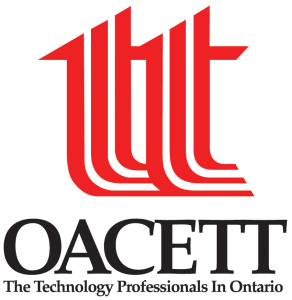Regulation and licensure in engineering is established by various jurisdictions of the world to encourage life, public welfare, safety, well-being, then environment and other interests of the general public and to define the licensure process through which an engineer becomes licensed to practice engineering and to provide professional services and products to the public.

An engineering technologist is a professional trained in certain aspects of development and implementation of a respective area of technology. An education in engineering technology concentrates more on application and less on theory than does an engineering education. Engineering technologists often assist engineers; but after years of experience, they can also become engineers. Like engineers, areas where engineering technologists can work include product design, fabrication, and testing. Engineering technologists sometimes rise to senior management positions in industry or become entrepreneurs.
The architectural technologist, also known as a building technologist, provides technical building design services and is trained in architectural technology, building technical design and construction.
The Association of Certified Engineering Technicians and Technologists of Prince Edward Island (ACETTPEI) is Prince Edward Island's independent certifying body for engineering/applied science technicians and technologists.
The Sydney Accord is an international mutual recognition agreement for qualifications in the fields of engineering technology.
Certified engineering technologist (CET) is a Canadian professional certification awarded on the basis of academic qualification and work experience. Abbreviated as C.E.T., most Canadian provincial engineering and applied science technology associations offer this certification. Certification is voluntary and does not represent a provincial regulatory requirement or a statutory required license.
The National Institute for Certification in Engineering Technologies (NICET) is an organization that was established in 1961 to create a recognized certification for engineering technicians and technologists within the United States. A 1981 study by the National Cooperative Highway Research Program (NCHRP), requested by the American Association of State Highway and Transportation Officials' SubCommittee On Construction (AASHTO SCOC), prompted the National Society of Professional Engineers (NSPE) to merge two certification bodies; the Institute for the Certification of Engineering Technicians (ICET) and the Engineering Technologist Certification Institute. The result is a nonprofit organization that provides a nationally recognized and accepted procedure for recognition of qualified engineering technicians and technologists.

An engineering technician is a professional trained in skills and techniques related to a specific branch of technology, with a practical understanding of the relevant engineering concepts. Engineering technicians often assist in projects relating to research and development, or focus on post-development activities like implementation or operation.
A professional technologist (P.Tech) is a class of certification of engineering technologist and professional technologist in Canada and Malaysia respectively.

The Ontario Association of Certified Engineering Technicians and Technologists, or OACETT, is a not-for-profit, self-governing organization in Ontario, Canada. It is a professional association that promotes the interests of engineering and applied science technicians and technologists to industry, educational institutions, government and with the public. It currently has 24,000+ members.
The Association of Science and Engineering Technology Professionals of Alberta (ASET), is a professional association located in Alberta, Canada. The organization represents applied science and engineering technology professionals in industry, educational institutions, the public and the government. ASET also evaluates the qualifications of individuals who voluntarily apply for certification and issues professional credentials accordingly. It also delivers a number of benefits and services to its members and their employers.

The Certified Technicians and Technologists Association of Manitoba (CTTAM) is a regulated profession in Manitoba responsible for certifying engineering/applied science technicians and technologists. The Certified Applied Science Technologists Act assented on June 29, 1998.
The Saskatchewan Applied Science Technologists & Technicians (SASTT) is Saskatchewan's independent certifying body for engineering/applied science technicians and technologists.
The Society of Certified Engineering Technicians and Technologists of Nova Scotia, also called TechNova Certified Technology Professionals, is Nova Scotia's independent certifying body for engineering/applied science technicians and technologists.
Certified engineering technician (CTech) is a Canadian professional certification awarded on the basis of academic qualification and work experience. Abbreviated as C.Tech., most Canadian provincial engineering and applied science technology associations offer this certification. They are closely related to a certified engineering technologist and share the same professional association.
In Canada, a new occupational category of "technologist" was established in the 1960s in conjunction with an emerging system of community colleges and technical institutes. It was designed to effectively bridge the gap between the increasingly theoretical nature of engineering science degrees and the predominantly practical approach of technician and trades programs. Provincial associations may certify individuals as a professional technologist (P.Tech), certified engineering technologist (C.E.T.), registered engineering technologist (R.E.T.), applied science technologist (AScT) or technologue professionel (T.P.). These provincial associations are constituent members of the Canadian Council of Technicians and Technologists (CCTT), which nationally accredits technology programs across Canada through its Canadian Technology Accreditation Board (CTAB). Nationally accredited engineering technology programs range from two to three years in length, depending on province, with two-year programs leading to a C.Tech. certification and three-year programs usually leading to an AScT, CET or RET certification.
The Association of Engineering Technicians and Technologists of Newfoundland and Labrador (AETTNL) is Newfoundland and Labrador's independent certifying body for engineering/applied science technicians and technologists.
The Applied Science Technologists and Technicians of British Columbia (ASTTBC), is British Columbia's independent certifying body for engineering/applied science technicians and technologists.



